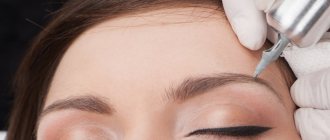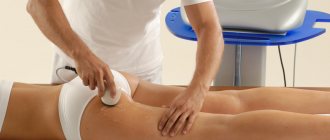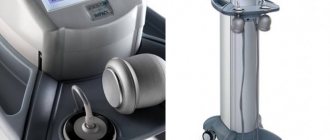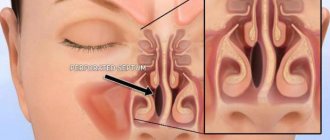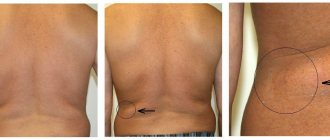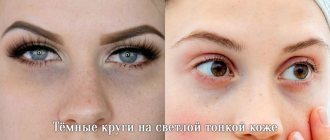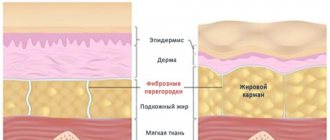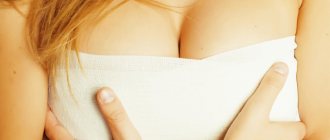What is cavitation
Cavitation is a technique for losing excess weight through external use. Simply put, it is liposuction that occurs without surgery or surgical intervention. This procedure does not require anesthesia, since it is absolutely painless and leaves no scars or cuts.
Cavitation is based on the work of ultrasound, which is now used not only for diagnostics, but also for physiotherapy. It affects human fat cells that are located under the skin. After the session, small air bubbles form in them, which grow in volume and ignite fat deposits. At the same time, the membranes of fat cells do not have severe damage.
Fatty tissue leaves the body naturally. More than fifty percent of these fat cells are eliminated through the lymphatic system, the rest goes through the liver and is absorbed into the blood, where it is converted into regular glucose.
After the ultrasonic cavitation procedure, you will not have unsightly sagging skin, no long recovery, no bumps. The procedure allows you to change the shape of your body without harming the elasticity and color of the skin.
This technique has the following advantages of its use:
- Does not leave behind stretch marks on the skin and other visible defects.
- It has a small list of contraindications.
- Does not change skin color. It also remains visually intact (has no depressions or bumps).
- It does not require rehabilitation because it does not damage internal organs and tissues.
- After it, you can immediately see the result, which will be saved for quite a long time.
Who is ultrasonic cavitation indicated for?
It should be noted that the procedure is not performed on all patients. For example, those who have no more than a dozen extra pounds may be offered other effective methods of body correction, for example, lymphatic drainage, anti-cellulite massage.
Indications for ultrasonic cavitation:
- voluminous fat deposits in the abdomen, shoulders, back, sides, thighs, buttocks;
- fibrosis, cellulite on the thighs and buttocks, “orange peel”;
- excess skin, sagging, poor tone;
- defects after previous surgical liposuction.
Contraindications to ultrasonic cavitation:
- oncological diseases;
- pregnancy and lactation;
- blood and vascular diseases;
- tendency to form blood clots;
- autoimmune diseases;
- diabetes;
- diseases and damage to the skin in the treatment area;
- other reasons that may become clear during consultation.
How the procedure is performed
Cavitation has the following rules for its implementation:
- To perform this procedure, a special device is used that emits ultrasound with a power of 39 kHz to certain areas of the body (problem areas).
- The total time of one session takes no more than an hour.
- The entire necessary weight loss course should include twelve procedures with an interval of ten days. However, after six months, it is advisable to repeat the treatment for five sessions to consolidate the results.
- Cavitation is usually done in conjunction with pressotherapy and lymphatic drainage to further speed up the weight loss process.
- In order to completely get your body into good shape, you should get rid of fat deposits gradually. That is, first you should work only the abdominal area or only the buttocks.
- As a rule, in order to completely get rid of fat cells in one area of the body, you should undergo at least ten sessions of the procedure. Then you need to wait a week and continue cavitation on another part of the body. Such a break is necessary primarily for health, because due to this procedure a person’s immunity decreases.
- As for the result, it all depends on the number of courses conducted and their duration. In the classic version, when completing all courses, you can lose up to twenty kilograms. However, we cannot definitively say that the lost weight will never return, because everything will depend only on the specific person and his lifestyle after this ultrasound therapy. Sometimes it happens that fat deposits leave the thighs or abdomen, but instead they actively begin to be deposited in the abdominal cavity, which will lead to diseases of the heart and other organs.
- Cavitation as a method for losing weight is very popular today because it is practically painless and quite effective. The first effect of it is visible after two or three sessions. Immediately after the procedure, a person can return to normal life, because he will not feel pain or discomfort.
- Clients who underwent this procedure noted the following effects from it:
- The skin is very noticeably tightened and becomes elastic.
- In just one procedure, 2-3 centimeters in volume are removed from the thighs.
- New fat deposits do not accumulate in the already treated area of the body.
Cavitation in pumps. Causes, consequences and how to avoid it.
In this article, I would like to again touch upon such an important topic during the operation of pumping equipment as cavitation. Once we already looked at the issue of cavitation and the way to combat it, which was proposed by the manufacturer Blackmer. You can see this article here https://tehnogrupp.com/blog/kavitatsiya-v-nasosnykh-ustanovkakh
In this article we will consider the issue of cavitation more fully, without being tied to a specific manufacturer. In the process of work, we very often encounter the following questions from our Customers: “The pump operates on liquid without abrasive and solid inclusions (in some cases it pumps purified drinking water), but for some reason the pump clicks, crackles, as if pumping stones, and when disassembled The pump is in such a state that one gets the impression that it was actually pumping stones. What is the reason?" A photo of the disassembled pump is presented below:
And the reason here is in such a physical phenomenon as cavitation. Surprisingly, many users of pumping equipment have never heard of this phenomenon, although it sent quite a few pumps to landfills. And there was always some excuse for this breakdown. Either the wrong filter was installed, or the quality of the pump was poor, or the wrong liquid was pumped. Although, perhaps, after incorrect shaft alignment, this is the next most common cause of pump failure.
What is the cause of cavitation and how does it “break” the pump?
Any hydraulic pump can be divided into two parts: the liquid suction side and the discharge side. If on the suction side the liquid pressure drops to the vapor saturation pressure, then vapor bubbles begin to form in the liquid and the lower the pressure, the more bubbles begin to form in the liquid. Simply put, the liquid on the suction side begins to “boil”. I think it’s no secret that the boiling point of water in the mountains is lower than above sea level. This is due to the fact that the atmospheric pressure in the mountains is lower. For example, on the highest Mount Everest it is ~0.3 bar and water begins to boil already at a temperature of about 70C. Likewise, on the suction side of the pump, the pressure can be significantly lower than atmospheric pressure. As a result, the liquid begins to “boil” with the formation of steam bubbles. The liquid then moves to the pump discharge area, where the pressure is higher than atmospheric pressure and the bubbles “collapse” to form a shock wave. In some cases, the pressure during such a water hammer can exceed 10,000 bar. Naturally, the pumping equipment is not designed for such loads and damage occurs, which we have already seen in the photo above.
How to deal with cavitation?
It is worth noting that cast iron, from which most pumps are made, copes poorly with cavitation due to the rapid destruction of graphite inclusions. Of the relatively accessible materials, stainless steel can resist cavitation for some time. Also, to reduce the physical consequences of cavitation, various hard coatings and hardening of the most vulnerable parts of the pump are used to increase the resistance to deformation of the top layer of metal. It is worth noting that these methods are rarely used in the production of pumps, because they are expensive and ineffective. Even the most durable material is not able to withstand cavitation for a long time, and the use of more resistant materials, in most cases, is only necessary to minimize damage to the pump if, for one reason or another, it begins to “cavitate.”
Fortunately, cavitation in the pump can be prevented and there are special formulas for this. In addition, each pump has a NPSH declared by the manufacturer (NPSH: Net Positive Suction Head - net hydraulic head). A distinction is made between NPSHа and NPSHr, where the first is the actual value of the head pressure at the suction pipe, and the second is the required head pressure for operating the pump with a suction reserve. We determine NPSH using the following formula:
From this formula it is clear that cavitation will be less likely if the head height is increased (or the suction height is reduced, for self-priming pumps), and the pressure on the surface of the liquid is increased (for example, if the container is sealed, then the pressure in the container can be increased). The denser the liquid, the higher the likelihood of cavitation. Also, the higher the saturated vapor pressure, the higher the likelihood of cavitation. Cavitation is also increased by pressure losses in the suction line. To summarize the above, to avoid cavitation, it is necessary to ensure “solid flow”. The photo below clearly demonstrates how, as the pressure on the suction line decreases, the shock wave increases due to cavitation.
For a more complete understanding of the calculation of cavitation, I will give an example of a problem:
Estimate NPSHa for a pumping system that is designed to pump 200 m3/h of water. The water flow comes from the tank, which is at atmospheric pressure and a temperature of 250C. The minimum water level in the tank above the pump suction pipe is 3 meters. The suction line has a diameter of 6 inches (~150 mm) and a length of 10 meters. The pump must pump water to another tank with a top water inlet connection. The maximum height of the discharge pipe (also 6 inches in diameter) above the pump discharge pipe is 12 meters. The unloading tank operates at a pressure of 3 bar. There is no control valve in the discharge line. The discharge line is assumed to be 100 m long, including all fittings and valves.
Solution:
1. First, let's determine the physical parameters of the system. 1.1 The density of water at 250C is ~994.72 kg/m3 1.2 Vapor pressure at 250C = 0.032 bar (This data can be taken from various reference books)
2. The second step in calculating NPSHA is to determine the pressure loss due to friction in the suction line. In this case, the pressure difference between the 6 inch suction and discharge lines is about 5 bar/km. For a 10 m suction line the pressure drop is 0.05 bar. To calculate the pressure loss in the suction line, you can use various programs for selecting pumping equipment. Almost every manufacturer provides such a calculation program. In this example, the pressure drop across the strainer is approximately 0.09 bar. If a new filter is installed, the filter manufacturer must provide a value for the maximum possible pressure drop across the filter. This value can be used to calculate the NPSH calculation.
3. Substitute the digital values into the above formula. Where HL is the head loss, P0 is the pressure at the surface of the water, PV is the vapor pressure for a liquid at a certain temperature (in our case 250C), Z is the height of the liquid column, ρ is the density of the liquid, and g is the gravitational acceleration. NPSHA = (1.013 - 0.032) × 10 5 / (994.72 × 9.81) + 3.0 - 0.5124 = 12.54 m
Those. To ensure operation without cavitation, a pump with a NPSHr reserve of less than 12.54 m is suitable
Safety
Since the cavitation apparatus still has ultrasonic radiation, which can inflame fat cells and impair immunity, in total this procedure can be harmful to those people who have certain contraindications. As for healthy people, this method of losing weight will not cause harm to them.
Is it possible or not?
Indications for this method of weight loss include:
- Treatment for obesity and cellulite deposits.
- In preparation for surgery.
- After liposuction (surgically) to consolidate the result.
- To reduce the volume of adipose tissue.
- To correct uneven areas of skin that have fatty deposits.
Contraindications include:
- Pregnancy and breastfeeding.
- Diabetes.
- Diseases of the kidneys, heart and liver.
- Infectious diseases.
- The presence of implants made of metal or plastic.
- Chronic diseases.
- The presence of a built-in pacemaker.
- Lactation period.
- The presence of inflammatory processes.
- Oncological diseases.
- Cold.
- Gallbladder diseases.
- Wounds on the body in the areas where the procedure will be performed.
Contraindications
Ultrasound cavitation in gynecology, like other ultrasound techniques, is not carried out without prior preparation. If the patient for some reason cannot or does not want to undergo a preliminary examination, the manipulation is postponed indefinitely. The main stages of preparation for the procedure are:
- blood analysis;
- Analysis of urine;
- vaginal smear;
- ultrasound examination of the pelvis.
Since the manipulation involves the delivery of a cavitated solution into the uterine cavity, the technique is not used in acute inflammatory processes, the presence of which can be indicated by laboratory tests of biomaterials. Also, the procedure is not performed during menstrual bleeding and pregnancy.
In gynecology, ultrasound cavitation is not performed at the request of the patient, unlike conventional ultrasound. For manipulation there must be indications determined by the doctor.
First, the gynecologist studies the medical history and gets acquainted with the individual characteristics of the female body. Cavitation requires treatment and has certain contraindications, so a consultation and examination with a gynecologist cannot be ruled out before the procedure. If the doctor considers it necessary, he will recommend that the patient consult specialists.
Cavitation is contraindicated in the presence of malignant processes, the location of which does not matter. If there are tumors whose origin has not been reliably established, then the unique technique should be abandoned in favor of thoroughly studied means.
Ultrasound therapy is not performed if the active components of the cavitated solution are intolerant. This nuance is discussed before the procedure. Some clinics take responsibility and perform ultrasound cavitation in the 2nd and 3rd trimesters of pregnancy, so they are limited to performing the procedure only in the first 3 months of the gestational age.
The result - what it depends on
In order to achieve good results in losing weight and maintain it for as long as possible, you should radically change your lifestyle before starting the first procedure. To do this, it is recommended to adhere to the following rules:
- Give up bad habits: smoking and drinking alcohol, since they, like no other, affect the rapid deposition of fat.
- It is necessary to drink one and a half liters of water every day and also before the cavitation procedure to saturate the body with sufficient fluid. This will significantly enhance the effect of the technique.
- It is also very important to watch your diet. Of course, this does not mean that you need to starve, since this is not very correct. You just need to eat a balanced diet, and eat healthy food every day, rich in vitamins, calcium, minerals and proteins. The foods that most contain these microelements include: eggs, fish, meat (chicken), cottage cheese, vegetables and fruits.
- In order not to slow down the process of losing weight, you must completely eliminate fried, fatty and smoked foods from your diet. Also, the menu should not contain semi-finished products, sweets and sausages.
- After each cavitation session, it is necessary to do physical exercises. This could be fitness, yoga, dancing or just long distance running. The main thing is that the body experiences stress. This will significantly help achieve maximum effect.
